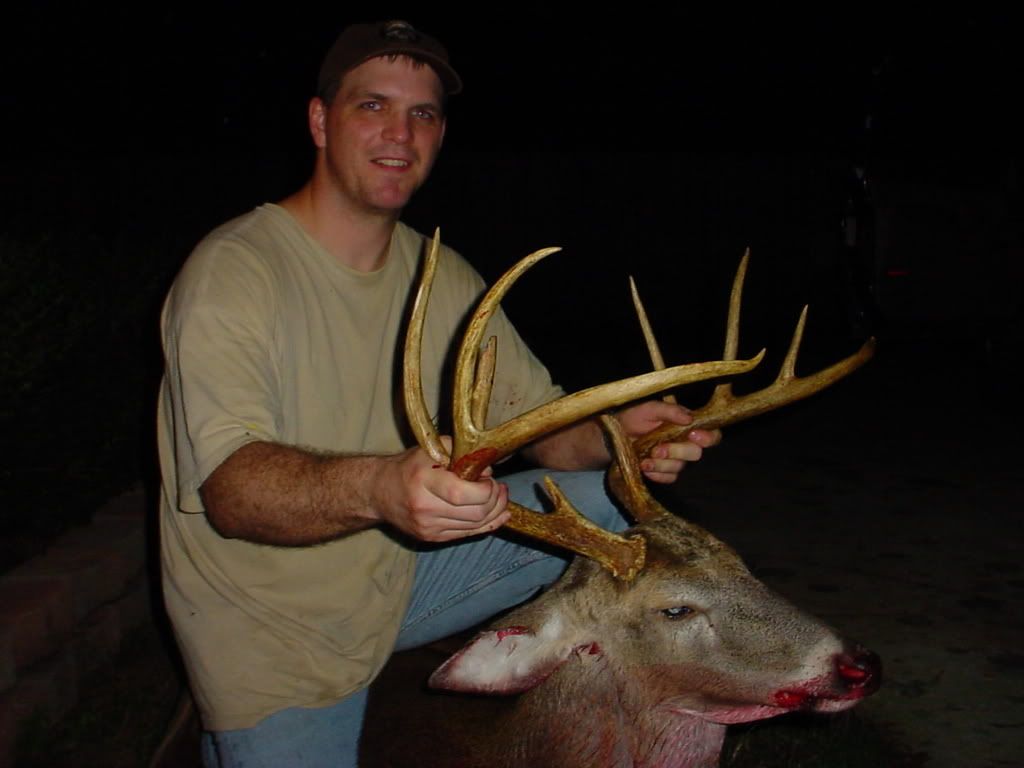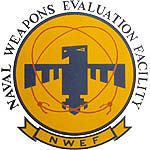

 The Accurate Reloading Forums
The Accurate Reloading Forums  THE ACCURATE RELOADING.COM FORUMS
THE ACCURATE RELOADING.COM FORUMS  Guns, Politics, Gunsmithing & Reloading
Guns, Politics, Gunsmithing & Reloading  Gunsmithing
Gunsmithing  Potassium nitrate bluing
Potassium nitrate bluingGo  | New  | Find  | Notify  | Tools  | Reply  |  |
| One of Us |
Has anyone tried doing potassium nitrate bluing? I found the following on another site: Inexpensive? Yes, it surely is! Of course it isn’t if you’re looking through those high-priced specialty gunsmithing supply catalogs. Just the bluing salts alone will set a person back about fifty bucks, not to mention the specialty tanks to use the solutions! However, niter-bluing uses nothing except potassium nitrate for its active ingredient, and potassium nitrate in a suitably pure form is as far away as the local hardware store, nursery supply shop or home improvement mart! It’s called stump-remover, and it sells for about two dollars per one pound bottle of powdered potassium nitrate! For my purposes, a simple standard sheet-metal bread-pan filled with three pounds of stump-remover creates a bluing tank large enough for many small projects including handgun frames, the actions of many rifles (less barrels of course), and all sorts of small firearms component parts that benefit from bluing. Too, the three pounds of potassium nitrate in the bread pan is just about the right quantity of material when it expands and bubbles up when being heated to a liquid. Add no liquid of any kind to the potassium nitrate! The crystals will melt down into a liquid with heat alone, DO NOT ADD ANYTHING ELSE! A Coleman stove or propane burner is perfect for heating and maintaining the temperature for our homemade bluing tank, and the potassium nitrate needs to be heated until it turns into a liquid form, whereupon it becomes a rather translucent yellow when fully up to temperature. When first melting down the powdered stump-remover version of this compound, it will bubble and foam with a brown almost glass-like formation as the crystals melt down, and the trapped air from the powder escapes. This is entirely normal, and merely stirring as the potassium nitrate comes up to temperature, and pushing the hard, clotted clusters of material that form back down into the liquid until all is melted, and the foaming action ceases is all that is needed to prepare your bluing solution. Once all of the material is melted into a liquid state, and the surface has been crystal-free for about fifteen minutes, you’re ready to blue those small parts that have been prepared ahead of time. Be aware that all parts must be completely free of oil and grease, and above all FREE OF ALL MOISTURE! Keep all water sources away from the liquid potassium nitrate, as a steam explosion will take place similar to getting water in molten lead! However, if you keep the bluing area free of water in all forms, you’ll have no problems at all in the bluing process. I have a fairly large tablespoon that I’ve drilled with holes to make it almost like a small sieve and use it to support small screws for bluing, lowering the screws in the spoon into the liquid potassium nitrate for bluing. All other small parts are suspended on fine wire for easy retrieval from the hot bluing solution. Simply dunk the degreased parts into the molted bluing salts for fifteen minutes or more to get a nice deep, rich blue color, the longer the part remains in the bluing salts the deeper and richer the color (at least to a point). Upon removal quench the newly blued parts into a suitably large container filled with common motor oil. This oil quench does a couple of things, first it stops the bluing process and kills the bluing salts, second, while the pores of the metal are open and expanded from the heat of the bluing solution, the oil penetrates into the pores and creates a deep, protective layer on the newly blued steel that will last for many, many years. Most people are absolutely astounded at how easy a simpler niter-blue hot bluing process can be, and more importantly the professional quality that the home hobbyist can achieve with such little expense or effort. The before and after photos of the small component parts to this carbine project speak for themselves. After bluing all necessary gun parts, simply turn off the heat source under your bluing pan, and allow the potassium nitrate to cool of its own accord, and it will congeal and harden into a solid white mass. Cover the container with aluminum foil, and store away until the next time there is a project that needs blued parts, then it’s a simple matter to once again heat up the bread pan full of bluing salts, get them in a liquid state and get the job done. Saved in the manner described here, your bluing salts and improvised bluing tank will last years, and years and years! The year of the .30-06!! 100 years of mostly flawless performance on demand.....Celebrate...buy a new one!! | ||
|
one of us |
Wher did you get this? How 'bout a link? Shawn Have you cycled your PF upside down lately????? God Bless http://www.davidchristmangunmaker.com/ http://i257.photobucket.com/al...wnhound/f66262d4.jpg | |||
|
| one of us |
Molten nitre blueing produces the lovely bright blues that are sometimes seen in old guns. It is REALLY beautiful. Only problem is that with Brownell's salts (and I assume others like them), the temperature required for blueing is high enough to change the heat treat of most steels (600F and above). If you can have access to "The Heattreater's Guide" and can stand the temperature, then technique comes into play ... doing the blueing without warping larger pieces. Mike -------------- DRSS, Womper's Club, NRA Life Member/Charter Member NRA Golden Eagles ... Knifemaker, http://www.mstarling.com | |||
|
| one of us |
you can get a full range of colors dependent upon the temprature of the salts. from the straw color found on Lugers th the brilliant blue on old Colt parts.  Doug Humbarger NRA Life member Tonkin Gulf Yacht Club 72'73. Yankee Station Try to look unimportant. Your enemy might be low on ammo. | |||
|
| One of Us |
Bluetick, I'm not sure...either www.leverguns.com or www.sixguns.com or maybe a link from there. It was about making a trapper out of a Marlin 336. I cut and pasted the article except for the title, do it is pretty much complete as I pasted above. Sorry!! I looked up the melting point of pure potassium nitrate and it is 631F and boils at 752F, so there is certainly a potential of changing structure with some metals. Silly me, I should have looked in my Brownells catalog first. I don't have a book on heat treating, anyone know the lower safe end temps for heat treating common gun parts?? The year of the .30-06!! 100 years of mostly flawless performance on demand.....Celebrate...buy a new one!! | |||
|
one of us |
The parts turn blue at approximately 525 degrees. It's only done on small parts and springs. You don't do the entire action. It's very attractive on the small parts for accent colors, but unfortunately, not very long lived. I have done a ton of small parts by this method, but there are precautions that need to be taken. Ottmar had his bath spew molten salts all over his shop. Luckily for him, he was in the other room when it happened. That was the end of his nitre bluing. Roger Kehr Kehr Engraving Company (360)456-0831 | |||
|
| One of Us |
I think Gun Cote is the answer here. I'm rebuilding a 336 Marlin I punched to .30-30 AI in a 16 1/4" barrel and the parts were mildly pitted anyway so a healthy shot of sand blasting will only improve the situation. I've had real good luck with ARs I've built using Gun Cote. Thanks for the comments and feedback on the subject!!! The year of the .30-06!! 100 years of mostly flawless performance on demand.....Celebrate...buy a new one!! | |||
|
| One of Us |
A propane torch and a pair of hemos works pretty cheap for screws & pins. The parts have to be polished well and completely oil free. Same colors as nitre blue but much less controlled. gunmaker | |||
|
| One of Us |
Bluetick, Here's the link: http://beartoothbullets.com/tech_notes/archive_tech_notes.htm/58. I knew it was there somewhere. The year of the .30-06!! 100 years of mostly flawless performance on demand.....Celebrate...buy a new one!! | |||
|
one of us |
Gunmaker, Torch bluing lasts even less time than nitre. I don't know the why of it, but it's fact. Like you say, it is a nice way to quickly blue a small part. Even nitre bluing should be relegated to low wear areas. Here is another variation of colors attainable in the nitre bath (and an example of me not following my own advise). [IMG]  [/IMG] [/IMG]Roger Kehr Kehr Engraving Company (360)456-0831 | |||
|
| One of Us |
That is BEAUTIFUL work!!! The year of the .30-06!! 100 years of mostly flawless performance on demand.....Celebrate...buy a new one!! | |||
|
| Powered by Social Strata |
| Please Wait. Your request is being processed... |
|

Visit our on-line store for AR Memorabilia

